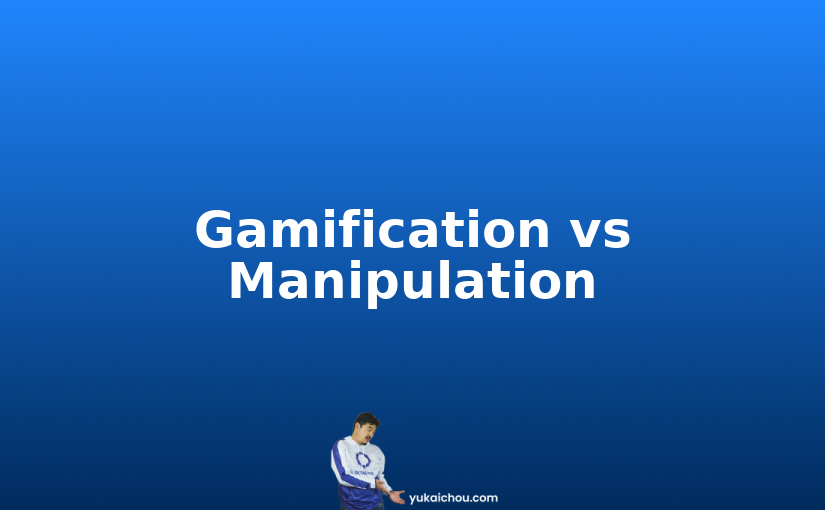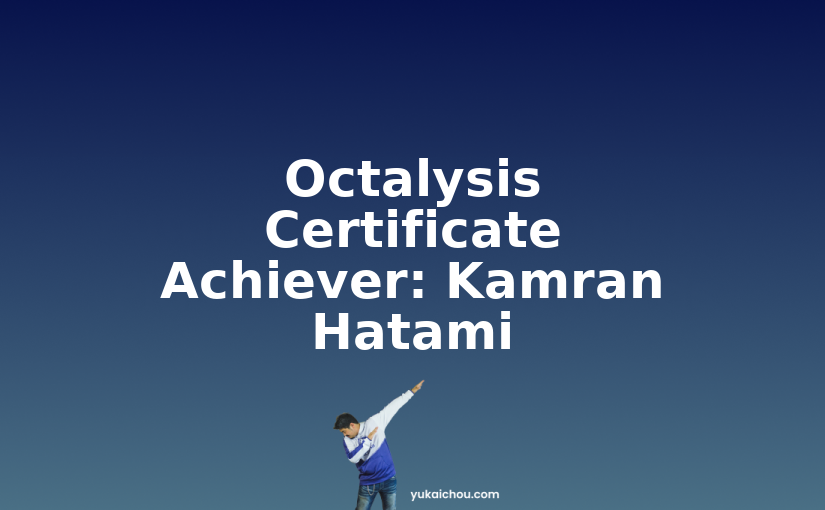Today, we’re going to talk about a new game design technique. I call it the Thornbush Weakness, which is Game Design Technique #125. It’s a somewhat complex concept.
The definition of a Thornbush Weakness is:
“Positioning a weakness that can become a strength.”
First, let me tell you a little allegory I heard when I was a young boy and then build this post into how to use this Game Design Technique.
Origin of GT #125: Story of the Rabbit and the Wolf

Once upon a time, there lived a cunning rabbit, forever chased by his rival, a formidable wolf whose greatest desire was to devour him. Despite the wolf’s efforts, the rabbit’s cleverness and speed always saved him, much to the wolf’s chagrin.
One fateful day the rabbit slipped, and the wolf, seizing his chance, captured him. “Ah, I finally got you, Mr. Rabbit. Now, you’re mine to eat,” the wolf gloated, pride swelling in his chest.
Unperturbed, the rabbit retorted, “Oh, absolutely, Mr. Wolf. Go ahead, eat me. But whatever you do, just don’t throw me into that dreadful thornbush in the valley. I’d suffer anything but that!” His voice dripped with a feigned dread that puzzled the wolf.
“Why is he so willing to be eaten?” the wolf wondered aloud. Determined to frighten the rabbit, he declared, “Then I shall crush your bones and scatter you to the winds!”
“Fantastic!” the rabbit exclaimed, playing along. “A fine end, indeed! But please, spare me from the thornbush. Anything but that!”
The wolf, growing more bewildered by the moment, threatened again, “Perhaps burning you alive will break your spirit!”
To which the rabbit cheerfully replied, “What a splendid way to go! Yes, let’s do that. Just avoid the thornbush, and I’ll be content.”
The wolf, frustrated and convinced of the thornbush’s terror, finally announced, “Enough! It’s the thornbush for you then!” Suddenly, the rabbit changed his previous bravado to an expression of fear: “No no no! I thought we agreed that you wouldn’t do that? Please, please! Don’t throw me into the thornbush! It’s the one thing I beg you!”
“Ha! Too late for that Mr. Rabbit. Now you will see the cost of causing me so much trouble for all these years!” With a sinister laugh, the wolf dragged the rabbit towards the thornbush, relishing in his apparent victory and the rabbit’s panic.
But upon throwing the rabbit into the bush, the wolf’s triumph turned to astonishment.
“Ha, ha, you’ve been tricked, Mr. Wolf!” the rabbit’s laughter echoed from within the thornbush, his voice brimming with mirth. “This is my home, my sanctuary, where I’ve eluded you for years!”
As the rabbit bounded away, the wolf, blinded by anger and deception, leaped into the bush only to be ensnared by its painful embrace. The rabbit’s laughter was the last thing he heard as he retreated, defeated and in agony.
And so, the rabbit’s wit triumphed over brute strength, teaching us the power of cunning over force, and how what seems like a weakness could actually be our greatest strength in disguise.
Story of Donald Trump’s Thornbush Weakness

Here’s another example, this time from (former) President Donald Trump. For Trump’s first term, people who disliked Trump believe that Donald Trump had Russian collusion, which means that he worked with the Russian government to win his election. And it was, of course, illegal to have a foreign, unfriendly nation put you up as president.
There’s a special counsel who was respected by both parties who was doing this huge investigation; it cost $35 million throughout those two years as a part of the contract.
“Yeah, when the report comes out, Donald Trump will go to jail!” “He’ll be kicked out of office, right?” The people who disliked him were completely focused on this. And so much of the conversation is focusing on the Russian collusion investigation, instead of other things, such as the policies that Donald Trump was implementing into the country. Even a lot of mainstream newspapers focused on sensational news items, such as, “Oh, imagine if Donald Trump was a Russian asset,” instead of “implications of his new tax law.”
So all Trump’s political oppositions started going into this movie drama thing, hoping that he’s a Russian pawn in the game, and he’s a puppet for other evil things. Most of the social media attention was also on, “Oh, look, he’s saying mean things on Twitter!” “He should be banned from Twitter, being such an asshole!”
Because of that, the whole media and all of his opponents spent all their energy and time attacking these “Thornbush Weaknesses” that Trump put out, when they could also be attacking the actual changes he was making, which also had lots of flaws and problems in them.
The people in the center would be more convinced if the opposing media shared about Donald Trump’s policies that would affect their daily lives, but when they just hear everyone talking about how bad of a human being Trump is, they start to tune out as they were not interested in celebrity news and drama. In effect, this witch-hunt blinded the general public from seeing any other mistakes that Trump might have made during his presidency.
And then, at the end of the day, the $35 Million investigation from the individual trusted by both sides concluded: “We found no evidence of Russian collusion.”
And so Trump just positioned a weakness, maybe not on purpose, for everyone to attack, while knowing it was actually a strength he had. But that Thornbush Weakness prevented his enemies from attacking his true weaknesses anywhere else, which turned out to be effective.
Trump them applied a similar tactic with his taxes. He stated, “I’m not going to release my tax statements. Or maybe I will. Maybe I will do it later. I’ve been audited, blah, blah, blah,” making everything sound very generic and vague. And everyone is like, “Oh, he needs to do it, it’s his duty. He’s not releasing his tax statements because he is hiding something shady, right?” And again, a lot of his opponents jump on that carefully crafted bandwagon, focusing on this one issue of releasing tax statements instead of the policies Trump has been implementing.
Some people who were still reminiscent of the previous witch hunt thought, “If he released his taxes, it’ll prove that he had Russian Collusion.”
I’ve personally done business taxes and personal taxes for years. And it doesn’t tell you the source of all your revenue, unless it’s from one employer. It usually just shows the entire total amount of income for a whole category.
But people are so drawn to this weakness of him that it becomes the only thing they go after him on.
Strategically, I think he’s just not releasing it on purpose, trying to make people focus on a weakness that isn’t a weakness at all. And then later on, he could just release the tax statements and say, “Look, it’s clean, nothing wrong. And you guys just wasted six years chasing after a ghost.”
Of course, many years later, his opposing party did force release his tax statements. People argued about whether he paid too little taxes or not, but none of the Russian Collusion topics that people were so sure of cropped up. This huge ordeal of energy could have been better spent on revealing whether Trump was doing a good or bad job in the White House instead.
Story of Obama’s Thornbush Weakness

Of course, this post is not meant to be political but how politicians use these tactics to gain an advantage. So before you call me a Trump-lover, let’s move on to Barack Obama. Interestingly, Barack Obama likely employed the Thornbush Weakness tactic on purpose with the controversy about his birth certificate.
Many years prior to Trump’s election, multiple people came out saying, “Hey, Obama is probably not born in the U.S. He’s probably born in Kenya and quickly moved to Hawaii and grew up in Hawaii. And because he wasn’t born in the United States, he’s actually not qualified to be The President.”
Donald Trump was pretty famous for pushing on that exact point. But it seemed to be Hillary Clinton’s campaign that originated theory.
The key point to note is that, Obama didn’t just reply, “Here, look, this is my birth certificate. I prove that I am an American citizen born in the United States.”
He just kind of mocked the idea that, “Oh, these people say I’m not an American citizen. That’s ridiculous. Ha-ha.” Which caused more of his political opponents to say, “Oh, look, he has something to hide. Why doesn’t he just show the birth certificate? Why?”
Obama insists,”We’re not going to entertain these silly people.” which causes more people to jump onto that bandwagon: “Oh, he must be hiding it. I bet he is not an American citizen.” Obama created a weakness that everyone was attacking.
Years later, after all this fuss and aggression diversion, Obama finally said, “Hey, look, here’s my birth certificate. Now your lives can move on.” He even publicly embarrassed Donald Trump in front of a live audience about the issue, which some said was the key trigger point for Trump to run for President.
This approach of positioning a strength as a perceived weakness, and strategic distraction, illustrates a nuanced tactic that can be applied in various contexts beyond politics, including business strategies and personal interactions. It demonstrates the power of controlling the narrative and managing perceptions, turning potential vulnerabilities into opportunities or diversions.
How Lawyers Use Thornbush Weakness
Now, let’s step away from political figures and go into the private sector. There are numerous psychological studies that suggests that when a lawyer proactively addresses a weakness or a negative aspect of their case, the jury tends to trust them more.
Essentially, when your client has several unfavorable aspects and you wish to preemptively address these issues before the opposition does, by acknowledging shortcomings upfront — for instance, conceding that the client has evaded taxes — it paradoxically strengthens the lawyer’s position. By admitting these faults, the lawyer can then argue that, despite these flaws, their client is not guilty of the crime in question, thereby not only gaining the jury’s trust but also rendering the opposing counsel’s criticisms less potent.
For example, in a hypothetical courtroom scenario, a defense attorney might start by acknowledging the defendant’s unlikability and various misdemeanors but then emphasize that the trial concerns a murder charge, not a character assessment. The attorney’s strategy involves shifting the jury’s focus from personal dislike to the crucial fact of the defendant’s alibi during the crime. This approach underlines that disliking the defendant is not sufficient grounds for a murder conviction. In essence, the lawyer first presented a Thornbush Weakness for the jury to judge on, but then revealed that this is not actually a weakness in the context of this trial.
Statistics show that lawyers who employ this tactic of presenting weaknesses first win 65% of the time, illustrating that revealing vulnerabilities can paradoxically empower one’s position.
How Volkswagen Used Thornbush Weakness

Shifting to a business context, this concept translates into strategies for turning product or service weaknesses into strengths, akin to the “Thornbush Weakness.” A classic example involves the advertising campaign by Doyle, Dane, and Bernbach for the Volkswagen Beetle. At a time when consumer preferences leaned towards larger vehicles, the Beetle’s small size and unconventional appearance were perceived as drawbacks. However, the advertising embraced these aspects, using slogans that highlighted the car’s distinctiveness and durability, effectively turning its “ugliness” into a selling point.
This approach leveraged Octalysis Core Drive 7: Unpredictable Curiosity, drawing attention through the novelty of acknowledging the product’s flaws. The campaign fostered trust by affirming the car’s reliability despite its aesthetics, thus aligning with consumers’ values and making Beetle’s practical benefits more persuasive.

How the #2 Car Rental Company Used Thornbush Weakness

Another example is Avis’s “We Try Harder” campaign. As the second-largest car rental company, Avis turned its runner-up status into a strength by emphasizing its commitment to customer service, thus differentiating itself from the market leader.
In essence, it’s weakness of not being the biggest forces it to work harder and provide better service. The weakness became a strength that consumers cared about more.
This strategy made Avis’s claim of working harder to earn customer loyalty more credible, illustrating how acknowledging a weakness can enhance a brand’s appeal.
How the Peace Corp Uses Thornbush Weakness
Similarly, the Peace Corps promotes the challenging nature of its assignments as a unique selling point, with the tagline “The toughest job you’ll ever love.” This acknowledges the hardships volunteers may face, yet frames them as part of a meaningful and fulfilling experience, again demonstrating the effectiveness of embracing and reframing perceived negatives.

“Look! This is a Thornbush Weakness! It’s a tough job. Most people don’t like tough jobs. But most people hate their jobs and don’t like what they do. They’re miserable. They’re suffering. We’re tough for sure. But you’ll love it out here. You got tough jobs that you hate, and you got easy jobs that you hate. We’re the tough job you will love for a change.”
By admitting it is tough, there is more believability that it is lovable.
How the Listerine Uses Thornbush Weakness

We also have Listerine, the mouthwash company, using a thornbush weakness: “the taste you hate three times a day.”
They have a weakness, which is that the product tastes really bad so people don’t like to use mouthwash. But they use it in as a Thornbush Weakness: it’s still something you do three times a day. Guess why? Because it’s so important. So even though it is a taste you hate, you’ll still do it three times a day.
So again, it stands out when you criticize your own product or brand, but then it makes the strength you market more believable.
How Restaurants Use Thornbush Weakness
Now, moving into an example of small restaurants that uses the same strategy, they made a study that tried three different experiments with a small restaurant.
So the first experiment is that a small restaurant will say, “Hey, we’re a very small restaurant” That’s the weakness. And then it says another weakness, “We don’t offer a lot of parking spaces. So it’s hard to find parking.”
And then the second experiment says, “We’re a small restaurant. But our food tastes great.” So it’s a weakness but an unrelated strength. As we mentioned above, that still has merit to it, because you’ve built a little more credibility by admitting to a weakness. If you say you’re small, then saying something about yourself feels more credible. But the third experiment states, “We’re a small restaurant, but we’re a lot cozier. We bring people closer together.” That message became the most successful, and the reason is that the weakness was the flipside of the same coin regarding its strength.
If you’re small, you’re probably cozier. It’s like, “this person is not great at debating, but he’s one of the most genuine people I know.” Even though not debating well is a weakness, if you’re not going to debate someone then it’s just preferable to just have a genuine friend that accompanies you. So oftentimes when you design for your Thornbush Weakness, you want to connect that to a strength that is related to the same weakness.
Either the weakness itself is truly not a weakness like we saw in the political cases, or it’s the direct reason of the strength.
Story of Ronald Reagan’s Thornbush Weakness

Okay. Let’s consider the final example, which brings us back to politics. Specifically, it’s about former US President Ronald Reagan during his 1984 reelection campaign. At that time, public consensus suggested that he might be too old for the presidency. Many people felt he was perhaps too advanced in age to serve another four years, with his age being perceived as a weakness. However, during a public interaction, he managed to turn this into a strength. He made the following statement:
“Mr. Trudeau, I want you to know that I will not make age an issue in this campaign. I am not going to exploit, for political purposes, my opponent’s youth and inexperience.”
He confidently asserts, “Consider this: my opponent is young and inexperienced. Do you want someone with such inexperience leading the country? Or would you prefer someone older, seasoned, and experienced like myself?”
This approach effectively transformed a perceived weakness into a strength. This argument resonated with many, leading them to rethink, “Perhaps being older isn’t a weakness; maybe it’s actually a desirable trait in a president.” This serves as a classic example of how Reagan reframed a perceived weakness into something potentially advantageous. Had he not utilized this argument, and simply allowed the public to dwell on his age for months, the outcome might have been different. But in turning the tables, he convinced many that his age was, in fact, a strength, effectively nullifying all criticism targeted at him
Historically, this may not have been the sole reason, but Reagan won that election in one of the most significant landslides in U.S. history.”
Conclusion
The concept of “Thornbush Weakness,” illustrated through various anecdotes and real-world examples, highlights a counterintuitive but powerful strategy used in game design, politics, law, marketing, and other fields. This approach, which skillfully turns apparent vulnerabilities into strengths or strategic distractions, underscores the sophisticated art of controlling narratives and managing perceptions.
From the clever escape of the rabbit in my childhood story to high-stakes political tactics and innovative marketing campaigns, the principle is the same: acknowledging vulnerabilities and repurposing them cleverly can paradoxically increase credibility, trust, and ultimately, success.
This technique not only underscores the importance of strategic thinking in addressing weaknesses but also fosters a deeper appreciation for how perceived disadvantages can be reconceptualized as strengths.
Viewed through this prism, “Thornbush Weakness” is not merely a “Game Technique”; it represents a profound insight into resilience, creativity, and the transformative power of perspective. It challenges us to rethink our obstacles and transform them into our most significant assets.







